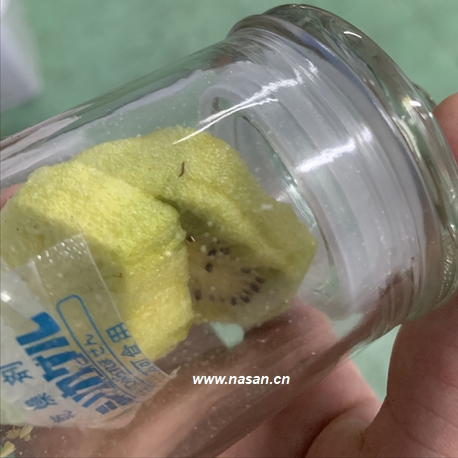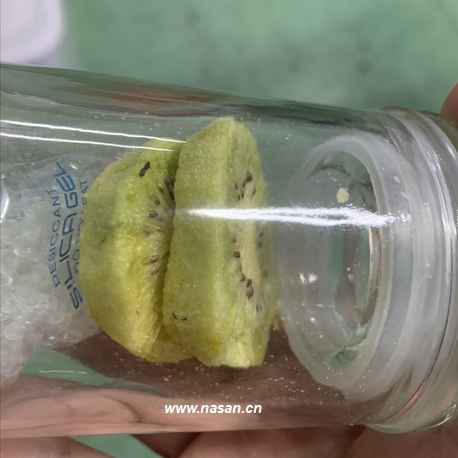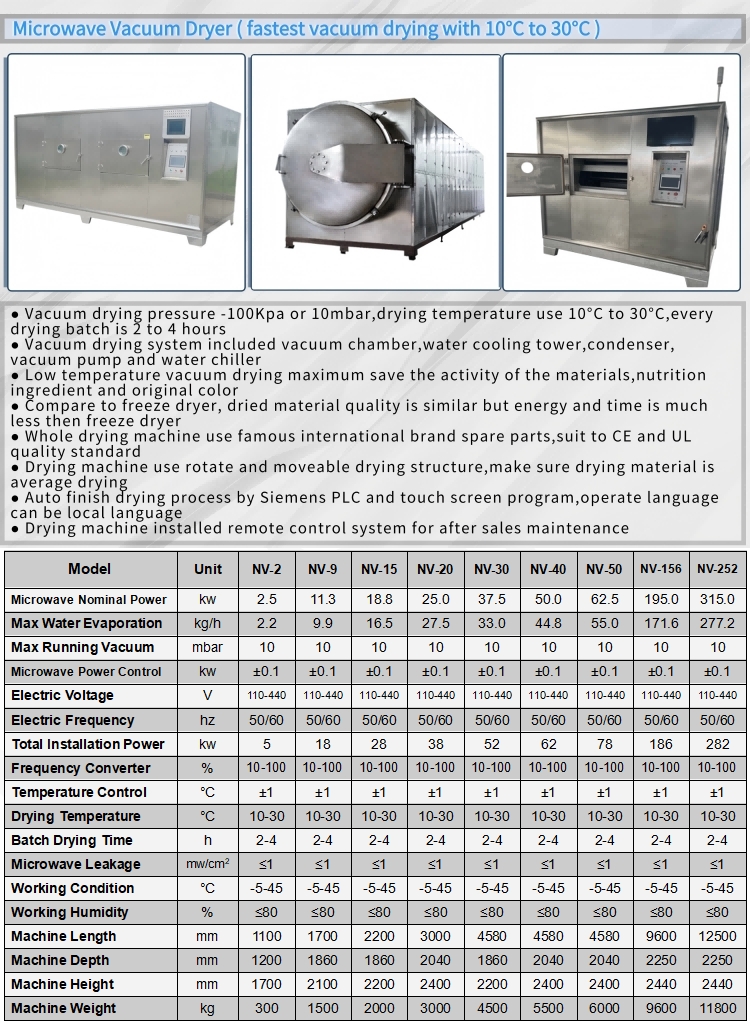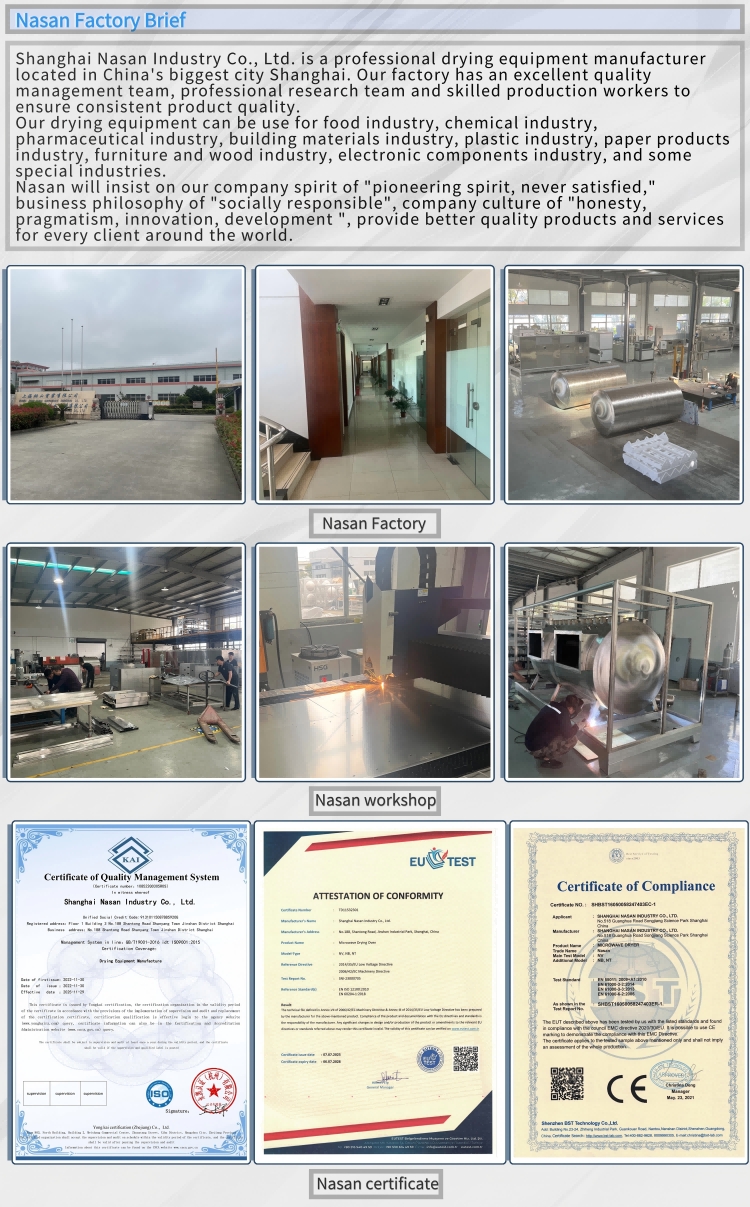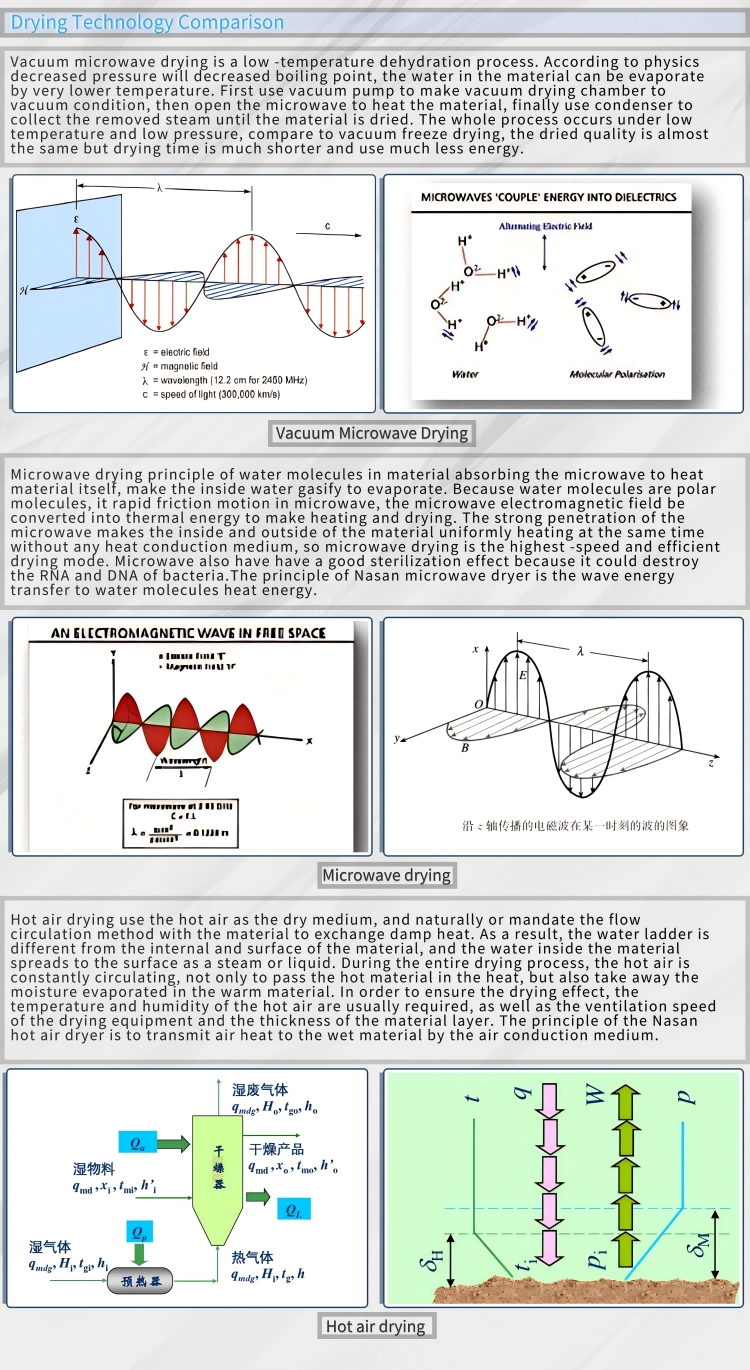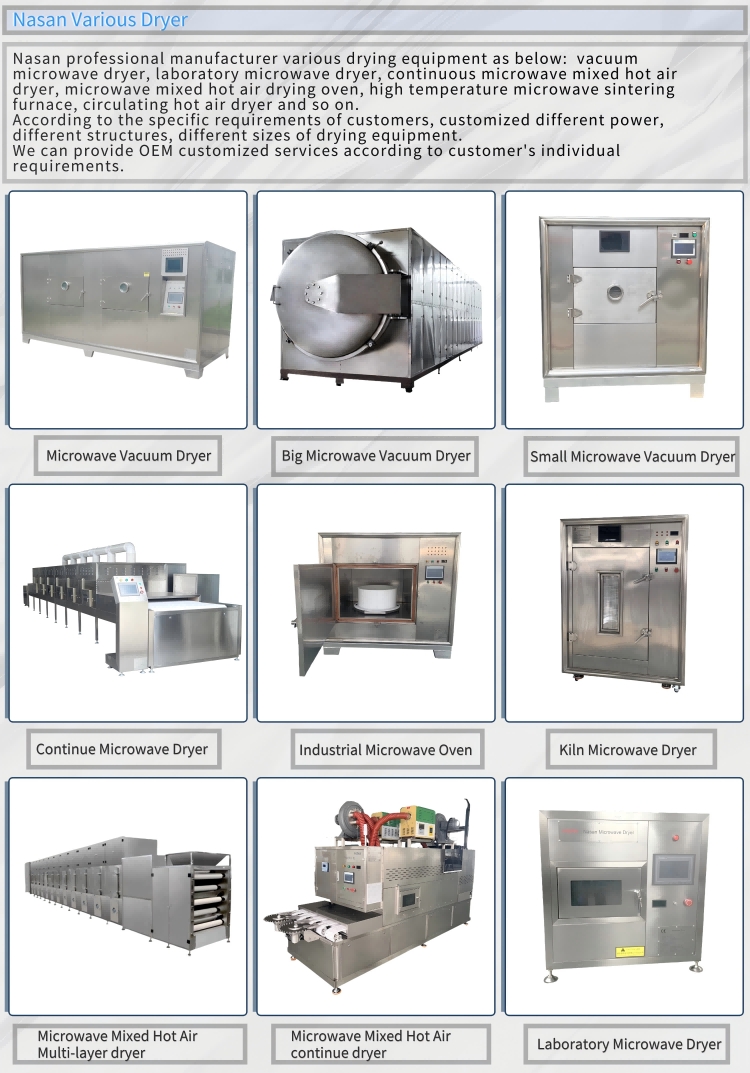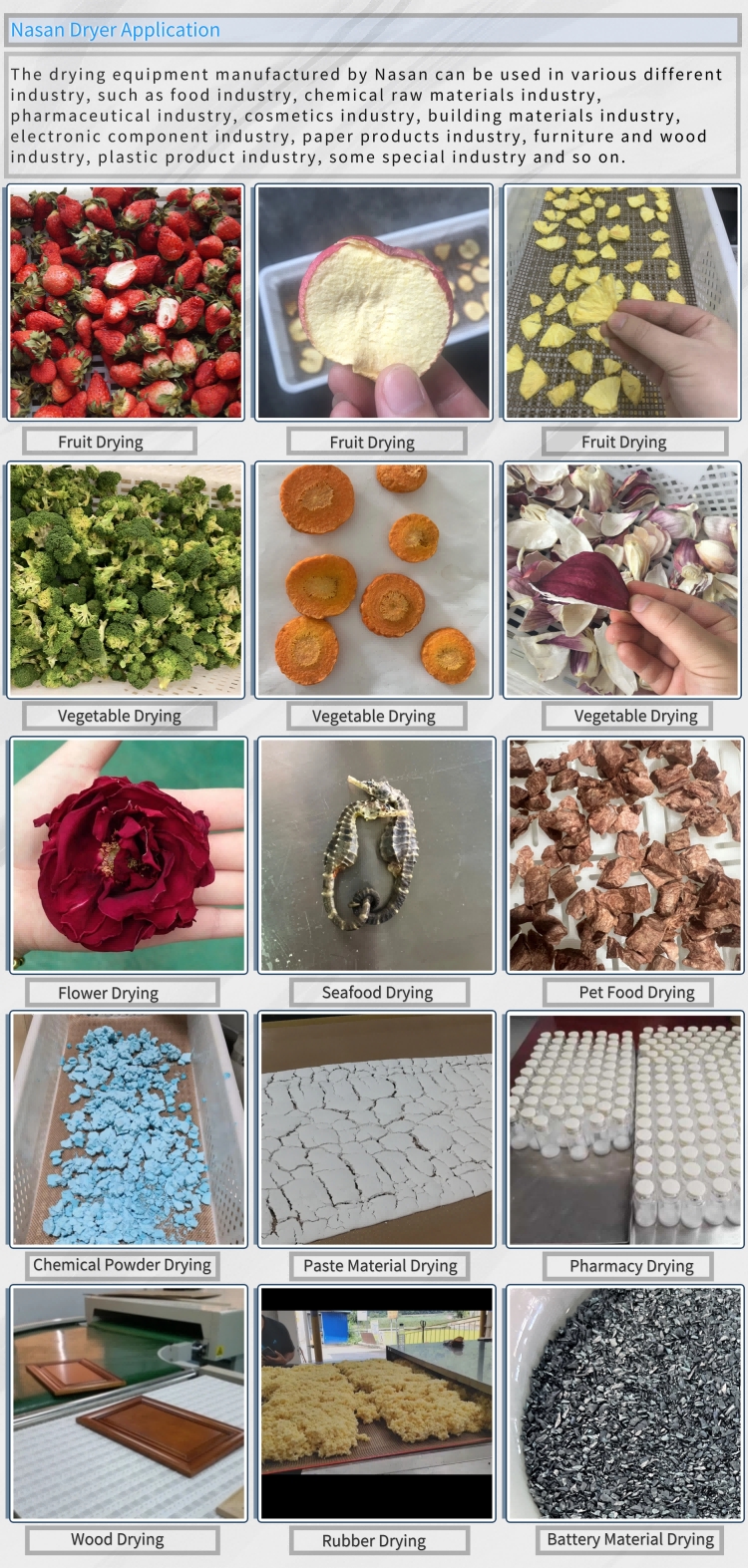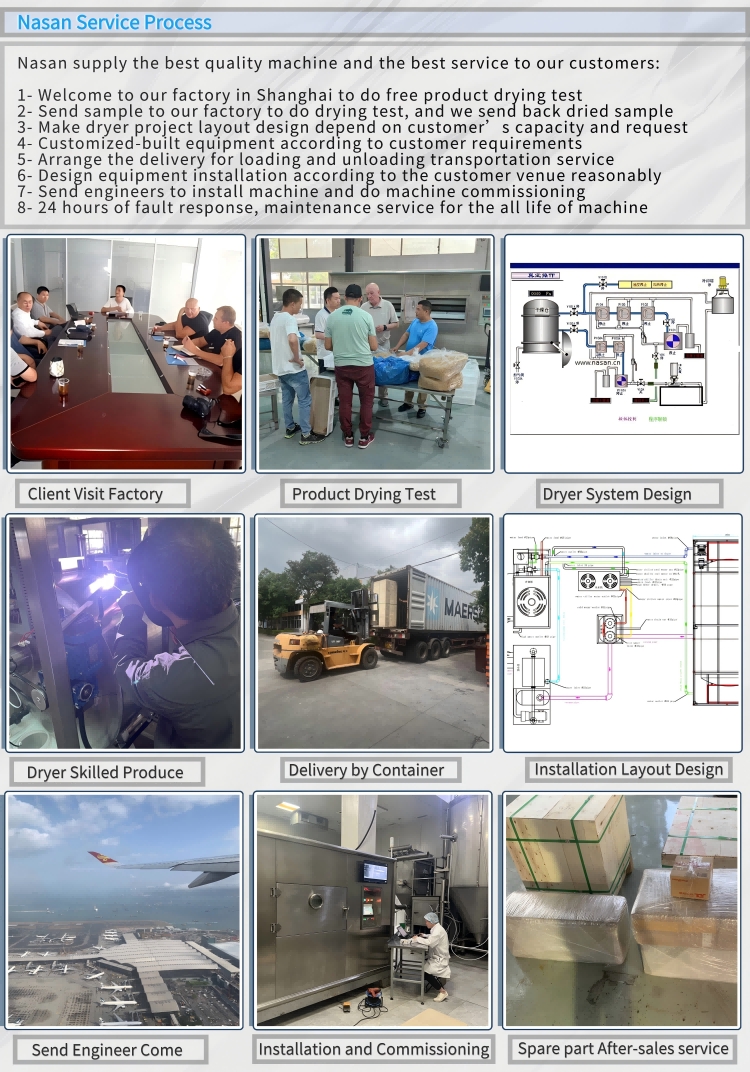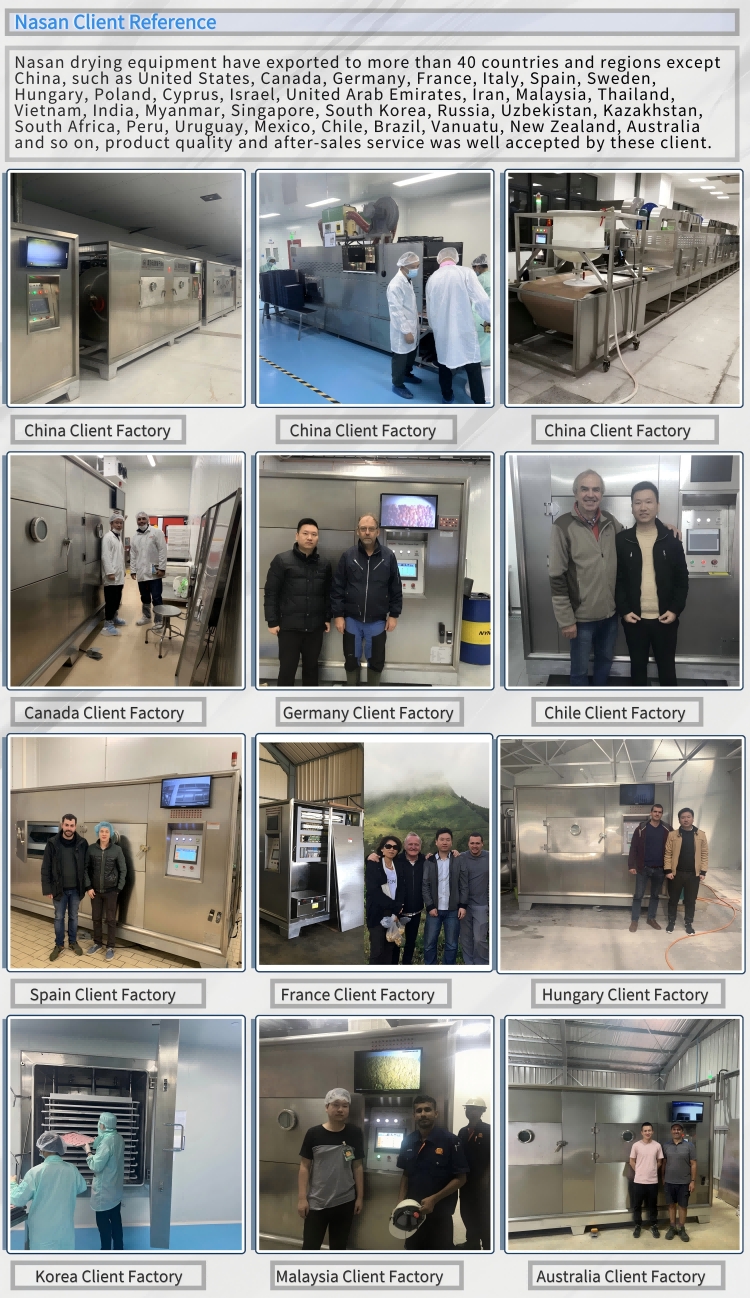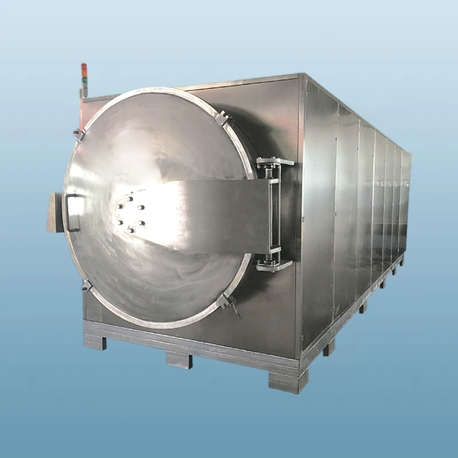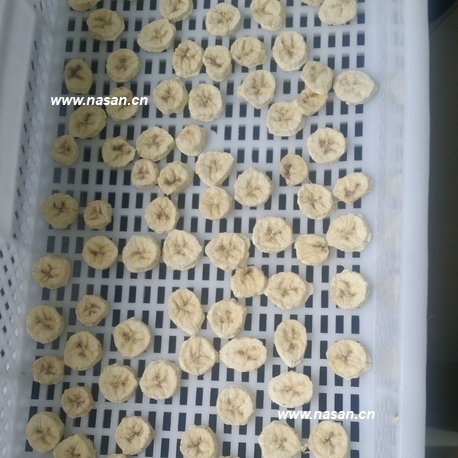Kiwi vacuum microwave drying is a targeted application of hybrid drying technology, designed to overcome the unique challenges of processing kiwis—including their soft, juicy pulp, high sensitivity to browning, and delicate bioactive compounds (e.g., vitamin C, actinidin enzyme). Unlike traditional drying methods, this technology preserves the kiwi’s bright green color, sweet-tart flavor, and nutritional integrity while achieving efficient moisture removal. Below is a detailed breakdown of its core components.
Why Kiwis Need Vacuum Microwave Drying
Kiwis have distinct traits that make conventional drying (hot air, sun drying) problematic:
High Moisture & Soft Pulp: Fresh kiwis contain 80–85% moisture and soft, fragile pulp, which easily mushes or sticks together during slow drying (e.g., sun drying).
Severe Browning Tendency: Kiwi pulp is rich in polyphenol oxidase (PPO) and chlorophyll—exposure to air or high heat causes rapid browning (turns green pulp dull brown) and chlorophyll degradation.
Heat-Sensitive Nutrients: Vitamin C (kiwis have ~2x more than oranges) and actinidin (a beneficial enzyme for digestion) degrade quickly at temperatures above 60°C, making high-heat methods (e.g., hot air drying) unsuitable.
Vacuum microwave drying solves these issues with low-temperature processing (prevents nutrient loss/browning) and internal, uniform heating (avoids pulp mushing), making it the optimal choice for high-quality dried kiwis.
Industrial Considerations for Kiwi Drying
For manufacturers scaling up kiwi vacuum microwave drying, key factors to address include:
Pulp Stickiness: Use silicone-coated or non-stick drying trays (prevents slices from sticking during drying). For large batches, add a thin layer of food-grade maltodextrin to slice surfaces (reduces stickiness without altering flavor).
Color Consistency: Use automated sorting to ensure uniform kiwi maturity (unripe/overripe fruits cause uneven browning). Monitor ascorbic acid solution concentration (replenish every 50 kg of kiwi to maintain effectiveness).
Energy Optimization: Kiwis have high initial moisture—use a two-stage drying process:
Waste Reduction: Use “seconds” (kiwis with minor peel blemishes or irregular shapes) for drying—they are unsuitable for fresh sale but ideal for processed products, cutting food waste.
In summary, kiwi vacuum microwave drying is the only method that reliably preserves the fruit’s bright green color, sweet-tart flavor, and key nutrients. Its efficiency and ability to avoid common defects (browning, mushiness) make it a valuable technology for food processors targeting premium snack and functional food markets.
